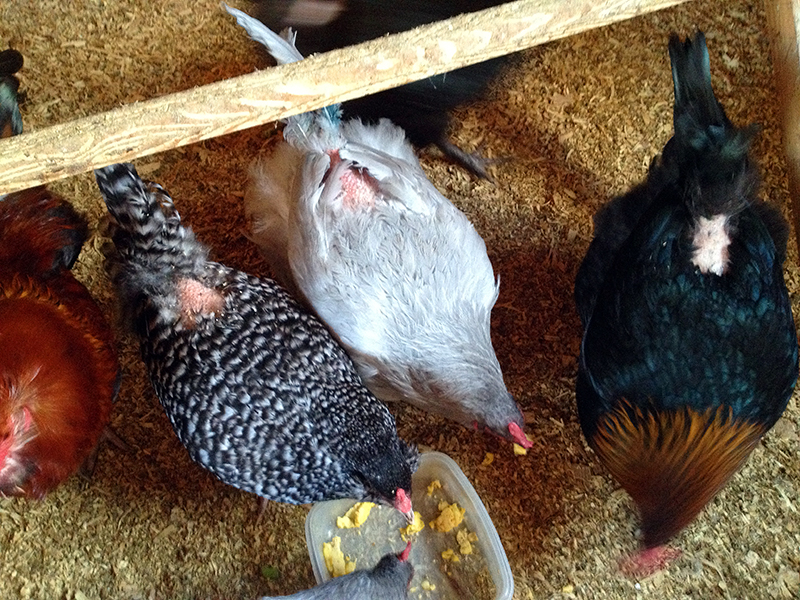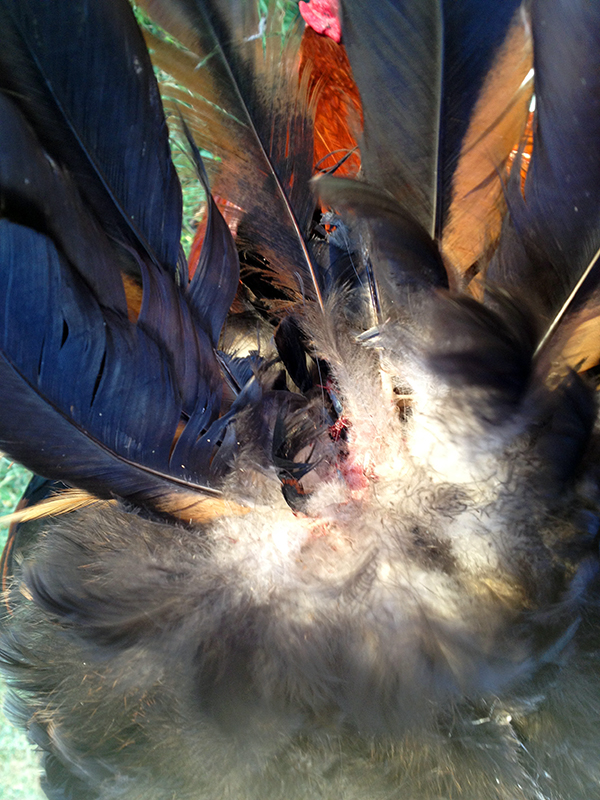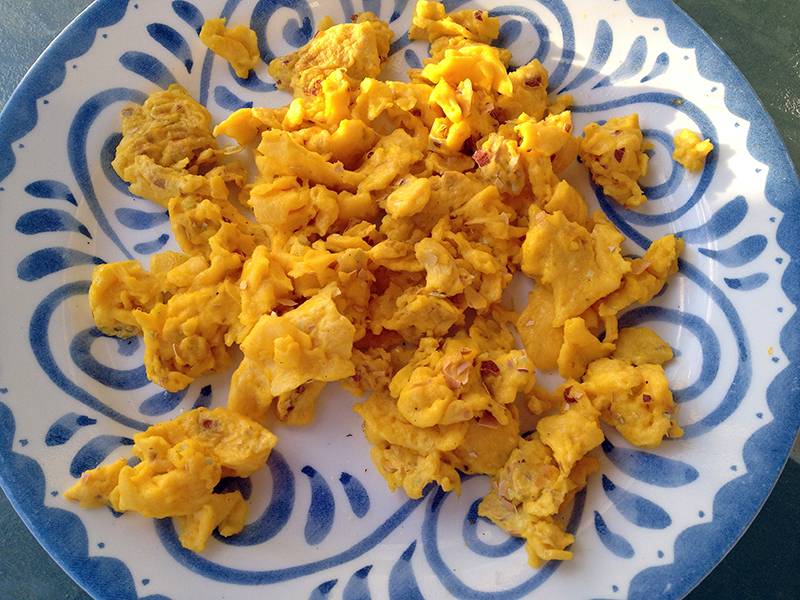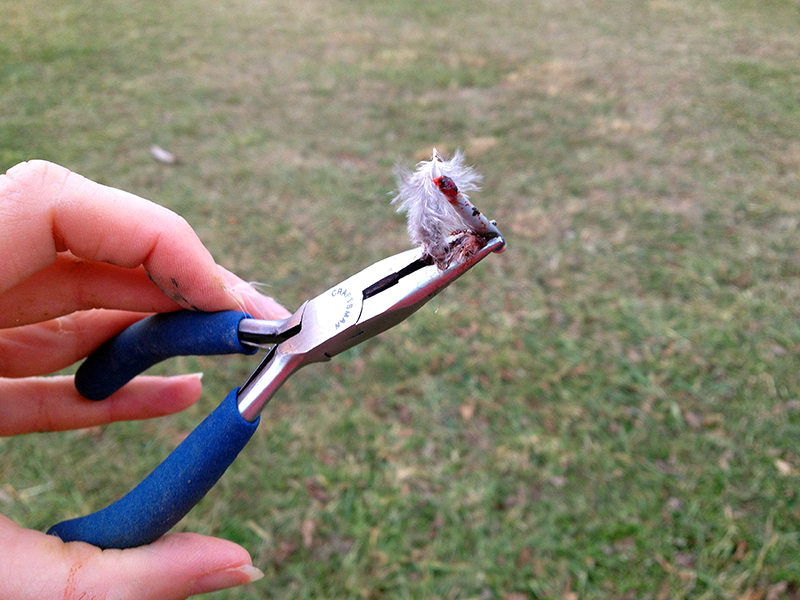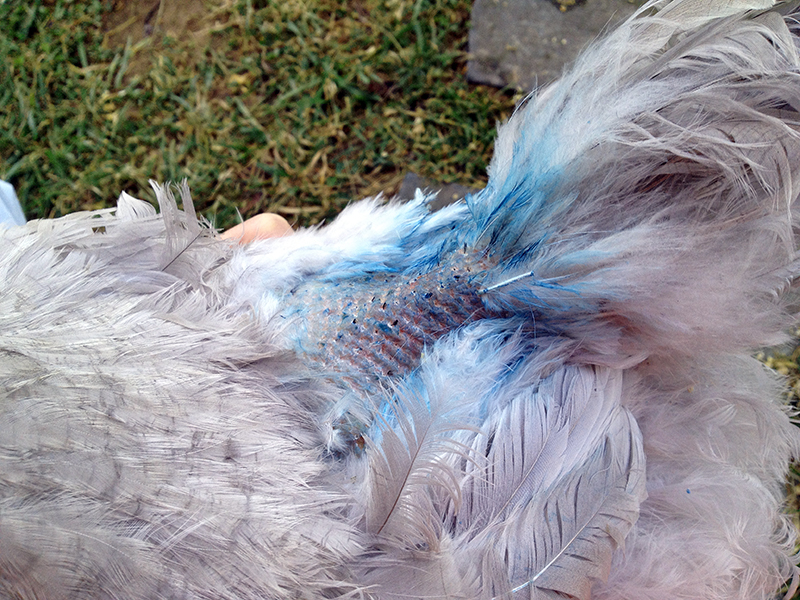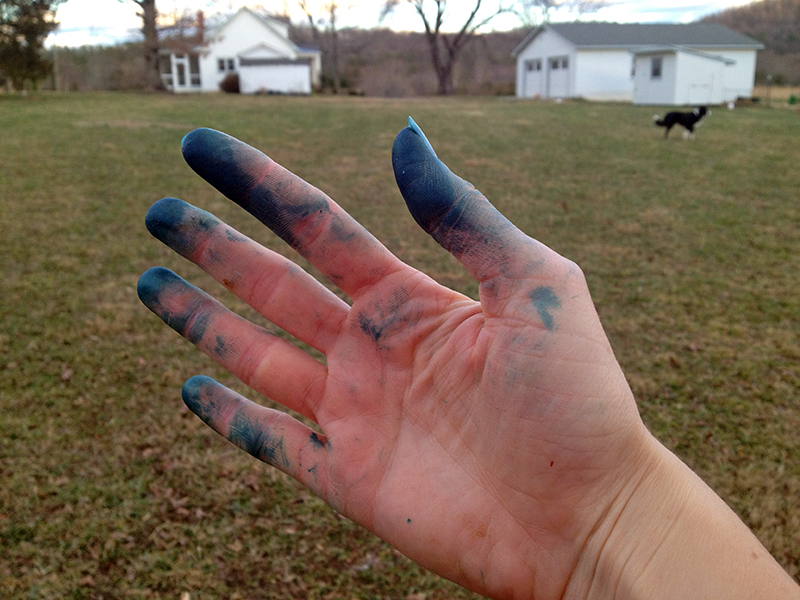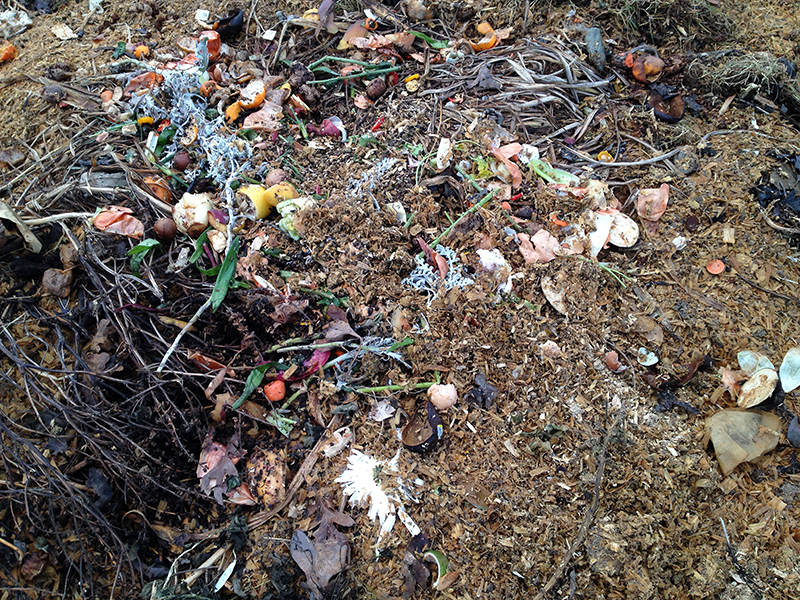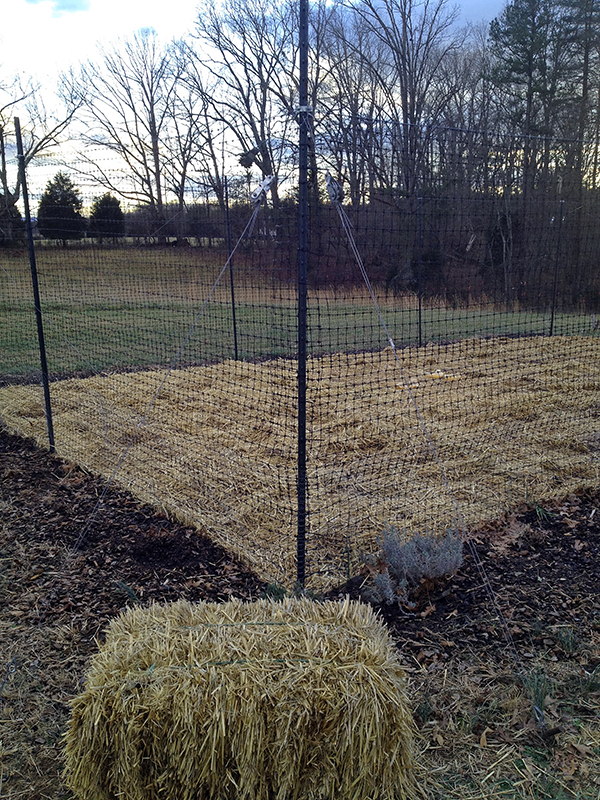For weeks now there’s been a mystery among the chickens. They’ve been losing feathers across their lower backs, sometimes so much so that they would bleed, attracting the other chickens to peck at their wounds. They’re too young to molt, and I didn’t find any symptoms of mites or lice, so I suspected the newly “active” young cockerel, Calabrese, of clumsy technique.
But the other day I noticed that even he was starting to get a ratty back. I picked him up by the feet and dug around in his tail feathers. I found a group of blood feathers (growing feathers with active blood supply still in their sheaths) that had been ripped off close to the skin and were bleeding.
Hmmm…the plot thickens.
I looked at the hens again and saw that only one had pristine feathering on her back: Iris, my broody hen. This surprised me, as Lilac has historically been the feistier hen and I’ve never seen Iris attack any of her coopmates. I was loathe to separate her from the flock because of the upset to their social dynamic, so I looked for other solutions. A quick internet search turned up a lack of protein as a possible reason for feather eating.
As a quick supplement I whizzed eight eggs, shells and all, in my food processor and cooked up a giant omelet.
I fed this to the birds as I caught them, one by one, for ministrations. I started with Calabrese, whose broken blood feathers were continuing to ooze and no-doubt attract more pecking from the flock. I pulled each out with my pliers.
Then I rubbed all the birds with blue food coloring, which tints their red skin and makes it less attractive to picking.
By the time that fiasco was over I had food coloring on my jacket, on the coop, my dog’s nose, and of course on my Smurf hands:
But triage is complete and now I must turn my attention to my flock husbandry, which is obviously lacking. I spent the better part of Saturday reading halfway through Harvey Ussery’s wonderful book, The Small-Scale Poultry Flock. I picked this up at the Mother Earth News Fair and just now have gotten in to it. That I can read it straight through like a novel is testament to Ussery’s writing. I think he gives the best advice on chickens that I have read anywhere—really practical stuff presented in a humorous, engaging tone. I appreciate Ussery’s wholistic outlook on keeping birds and his emotional sensitivity to creatures that are often regarded with the opposite of respect.
My reading confirmed what I already knew, that my birds were too closely confined, and bored. I let them out to range the yard and gardens about twice a week, but that’s obviously not enough to keep them happy. So now, in addition to feeding supplemental protein, I need to figure out a way to get the birds outside more often while still keeping them safe from hawks, foxes, dogs, etc. And, I need to take more advantage of the chickens’ manure and their pest-eating skills. And it wouldn’t hurt, what with the cost of feed, to have them hunt some of their own food.
I’ve got a nice compost pile just sitting in the woods, far enough from the coop that the birds don’t venture there.
And I’ve got a deer-fenced garden enclosure, reinforced with dug-in wire at the bottom, that’s now got nothing but a thick straw mulch on it to keep the soil organisms happy through the winter.
I wonder what would happen if I started composting directly in the garden, turning the chickens out in there each day to pick through the pile? The worm life would definitely benefit. The birds would be reasonably protected from ground predators, and if Tucker is outside he helps chase off any threats from the air. I just need to rig a semipermanent passageway from the coop to the garden so that the birds can travel back and forth, both for safety and egg laying, which happens throughout the day.
I’ll still let the chickens out to roam the pasture if I am around to supervise, but this might be a good way to solve the confinement problem I am having while putting the birds to work in the garden. It’s worth a shot.
And then when I do some more research and get some cash flow I will invest in an ElectroNet fence. With that I could have the birds work different sections of the yard without always worrying that they’ll be carried off by a fox. I think it would be good to erect the fence around the garden and run the birds in this “moat” after the garden has been planted and they can no longer be free in it. Perhaps they would help with the insect population if they were serving as ravenous alligators to any bug trying to crawl toward my vegetables!

